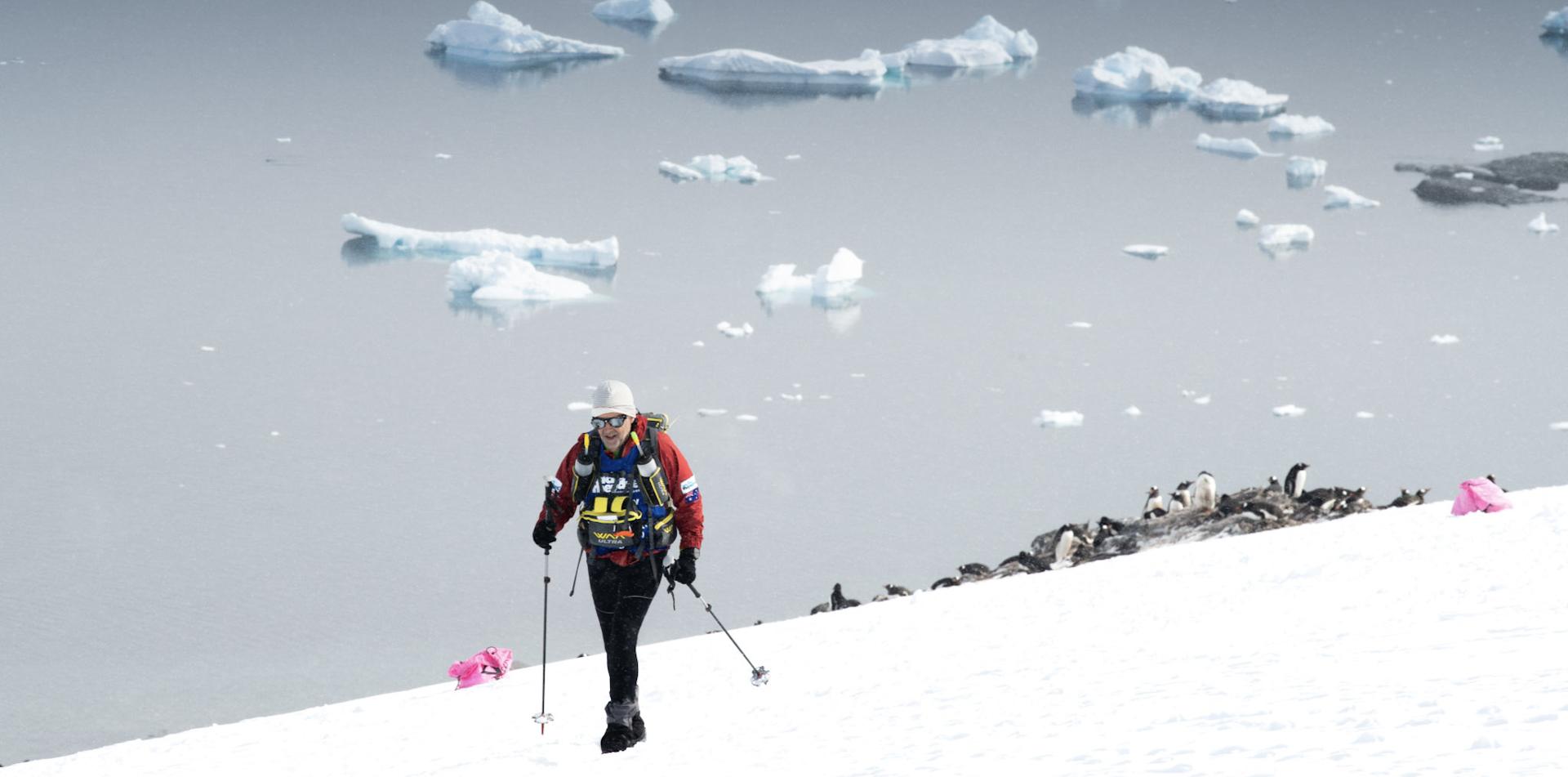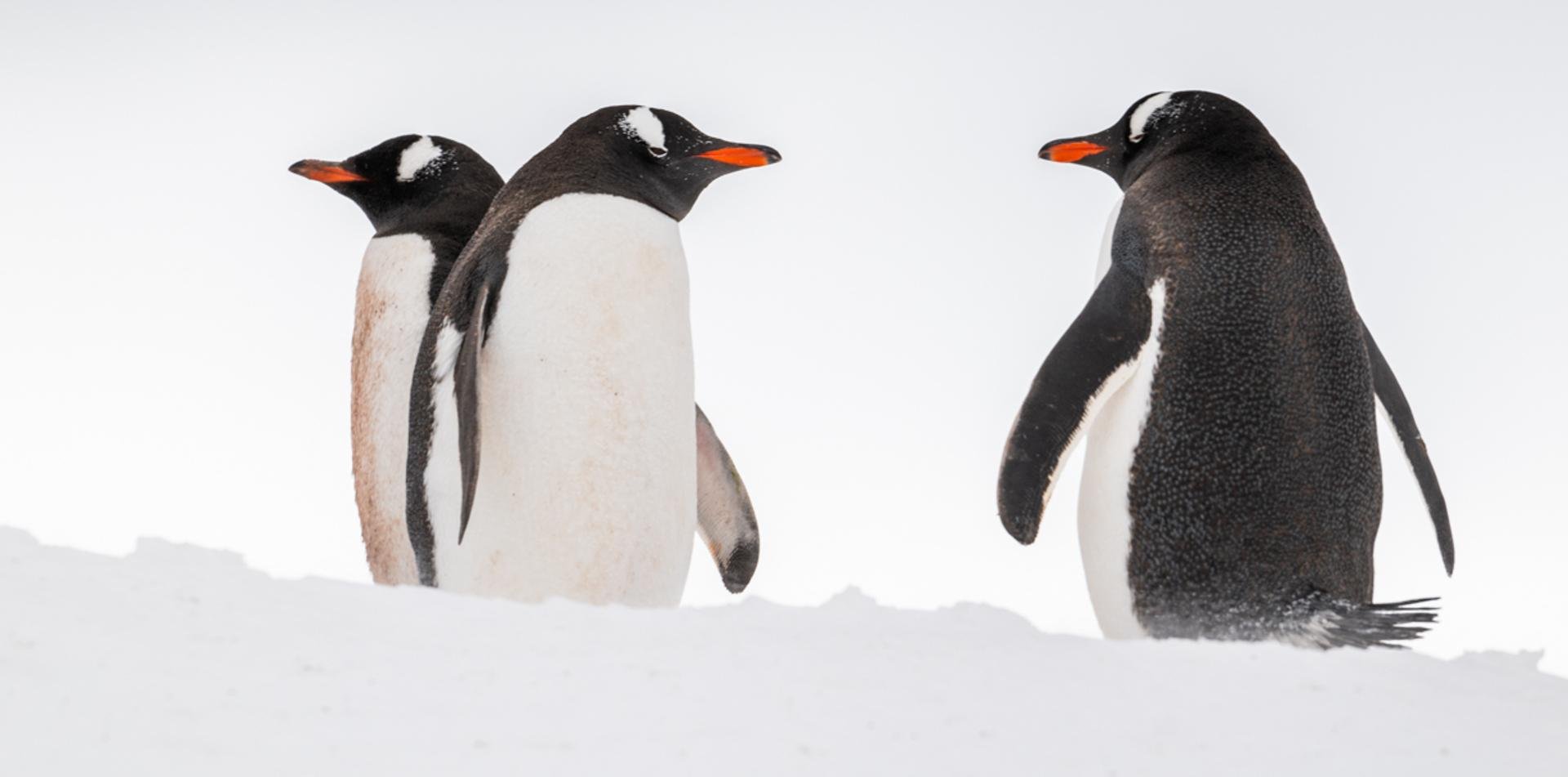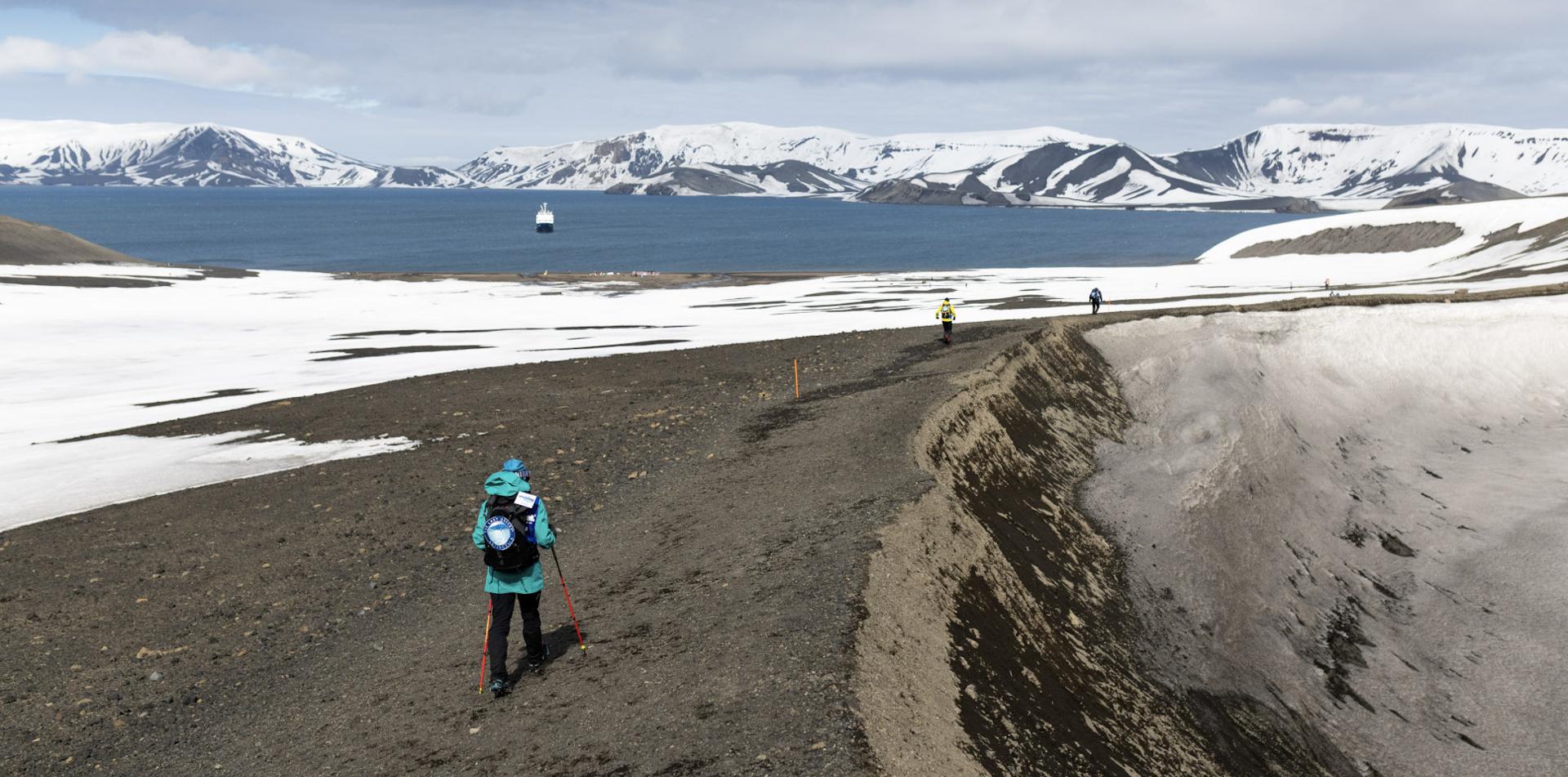Race Coverage

RACE Coverage
The Last Desert (Antarctica) – A Unique Race in a Unique Place
The Last Desert, held around the Antarctic Peninsula, is unlike any other RacingThePlanet Ultramarathon – or any other ultramarathon out there!
While racers still race up to 250km / 155 miles in up to six Stages, each taking place in a different location and all across a stunning but harsh environment, there some key differences to the other RacingThePlanet Ultramarathons.
The main differences to consider, other than obvious temperature and terrain, are:
- The race is based on time rather than distance
- The schedule and course can change from the plan
- The Expedition Ship is your “camp”
The Last Desert is Based on Time Instead of Distance
Unlike other races in the 4 Deserts Ultramarathon Series, where each competitor covers the same distance of 250km / 155 miles, those taking part in The Last Desert will cover varying distances over the same time period.
In any other RacingThePlanet Ultramarathon, racers will start each Stage of the race at the same time and, over the course of the race, cover a total distance of 250km with the winner being the one who can achieve this in the shortest overall time.
During The Last Desert, a course is set for each Stage and racers must try to complete it as many times as possible during the set time available. The winner is the person who completes the most distance in the given time. You can see in the table below that the maximum distance covered by a competitor was 252km, and the shortest total distance was 82km, with all racers spending a total of 26 hours and 42 minutes on the course.

A plan is made for a particular distance at each Stage, and this reflects the amount of time we have ashore. These outlined distances are, however, based on the front-runners of the group. There is no minimum distance required to be covered as long as you are out there on the course for the full amount of time allocated to that Stage. Typically, the first Stage is the longest and can be difficult, but you are also at your most well-rested having spent a couple of days on the Expedition Ship making the crossing from South America to Antarctica.
Here is an example of a plan for each Stage of the race:
Stage 1 = 100km
Stage 2 = 42km (marathon)
Stage 3 = 20-30km
Stage 4 = 20-30km
Stage 5 = 30-40km
Stage 6 = 1-10km
Prepare for the Unexpected
One of the most important things in Antarctica is that you have to prepare for the unexpected, and this is probably one of the biggest challenges of The Last Desert. With a very unpredictable climate, conditions can change suddenly and this will affect the outlined plan. Decisions must be made quickly by the management team to ensure that everyone stays safe.
All manner of things could change in advance or without warning, including start times, end times, distance of the Stage, and the amount of time spent on each Stage. Another consideration is that Stages may be more than one day, or we may cover multiple shorter Stages in a single day. Everything depends on the weather!
Explore Up to 6 Different Locations!
We have used more than 20 different locations in Antarctica over the years for Stages of The Last Desert, with four to six being used for each edition. King George Island, one of the South Shetland Islands, is a location that we use regularly and it’s the first sign of dry land after leaving South America and sailing to Antarctica. Deception Island, inside the caldera of a volcano which we sail into before starting a Stage of the race on this beautiful island, is another favourite and regular. It also hosts thermal waters as there is still some volcanic activity, and the remains of an old whaling station!

Damoy Point, often referred to as Dorian Bay, is home to the only post office in Antarctica and it’s possible to get your passport stamped there. Other regularly used locations include Cuverville Island, Neko Harbour, Paradise Bay and Petermann Island, not forgetting beautiful waterways such as Gerlache Strait, Neumayer Channel and Lemaire Channel.
The race is primarily focused on the Peninsula, which has a much larger array of wildlife than the mainland, stunning scenery and really showcases the variety that Antarctica has to offer.


You can explore more photos from these stunning locations in our gallery. To truly get an idea of what this incredible experience is like, watch some of the Highlights from The Last Desert 2022.
The Expedition Ship is Your “Camp”
During most RacingThePlanet Ultramarathons, racers sleep in tents at Camps after each Stage.
In Antarctica we return to the Expedition Ship after each Stage where you can warm up, shower, change your clothes, have a hot meal and sleep in a real bed. But don’t be fooled by this perceived luxury – The Last Desert is considered the toughest race in the 4 Deserts Ultramarathon Series due to the terrain, elevation, unpredictability and weather.








 Newsletter
Newsletter
 Online Store
Online Store
 Login
Login




